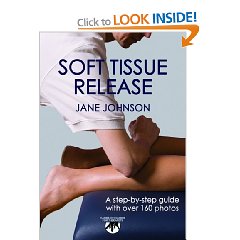Title – Massage for Therapists (third edn)
Author – Margaret Hollis
Publisher – Wiley-Blackwell
ISBN – 978-1-4051-5916-6
Cost – £28.99
Reviewed by Bob Bramah, MCSP, MSMA – Bob Bramah is dual-qualified as both a physiotherapist and a sports massage practitioner. He is also a board member of the Chartered Society of Physiotherapy’s special interest group on massage.
Target audience – This book is intended for students and qualified physiotherapists, sports therapists, occupational therapists, chiropractors, osteopaths, nurses, complementary and beauty therapists. All
massage practitioners could probably be included too.
Overview – This third edition of Margaret Hollis’s book is an update that was greatly needed. It is very thorough and still retains the useful hands-on approach seen in the previous editions. Massage is acknowledged as a basic skill within the physiotherapy profession one that requires high standards of practical application. All the contributors to this book are well versed in their particular fields of massage.
Key features – There are three sections to this book. The first covers the basis for massage, namely an introduction to massage, the relevant anatomy and physiology, its evidencebased effects, risk awareness
and contraindications. The second section addresses the application of massage, and includes examination
and assessment, preparation for massage, massage manipulations, massage to the upper and lower limbs, the back, the gluteal region, the neck, the face and scalp and the abdomen. It also describes the uses of classical massage in some health care settings. The third section contains some specialised techniques, such as some types of massage and soft tissue therapies, massage in sport, aromatherapy and shiatsu, and myofascial release.
Style – This is a well-presented text with very good photographs to support the content and massage applications. The practical, meaningful text is easy to absorb and refer to as needed.
Overall opinion – This is a readable, useful book covering the basis of massage and giving insight into some of its specialist areas. Established practitioners will find it good to refresh their knowledge with, while students and new practitioners will find it a very good starting point and it may also guide them in choosing which specialism they want to learn in greater depth. The cost of £28.99 is not too high and this book will make a good addition to any personal collection or library.
To order through Amazon click here or visit http://bit.ly/MargaretHollis



 Posted by Tor
Posted by Tor 


